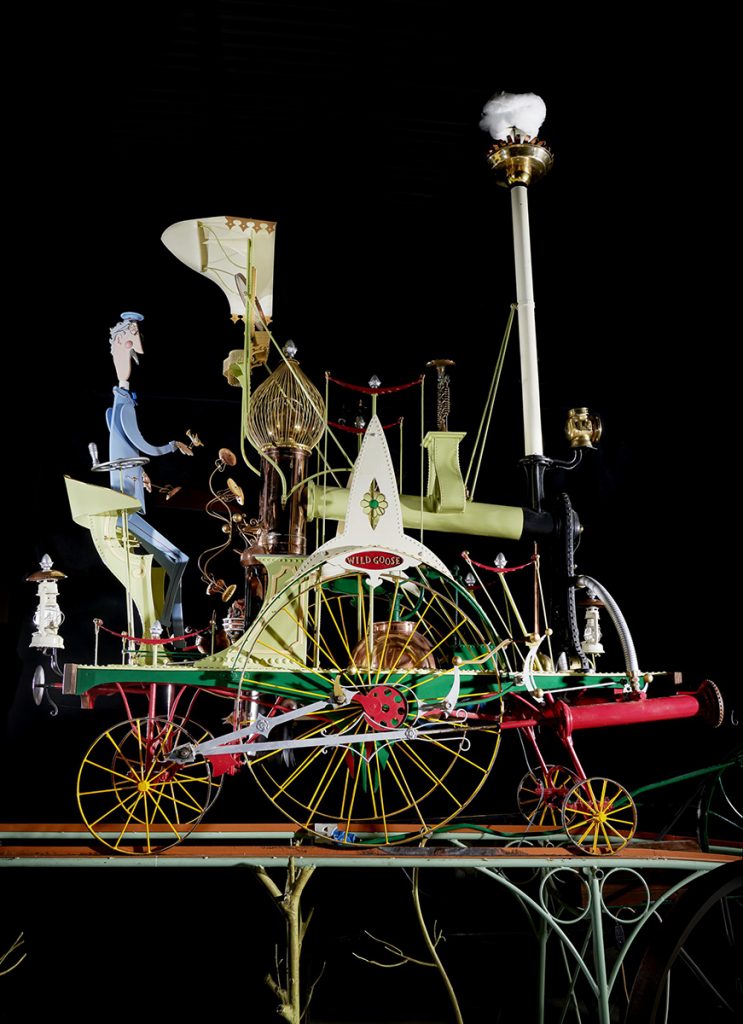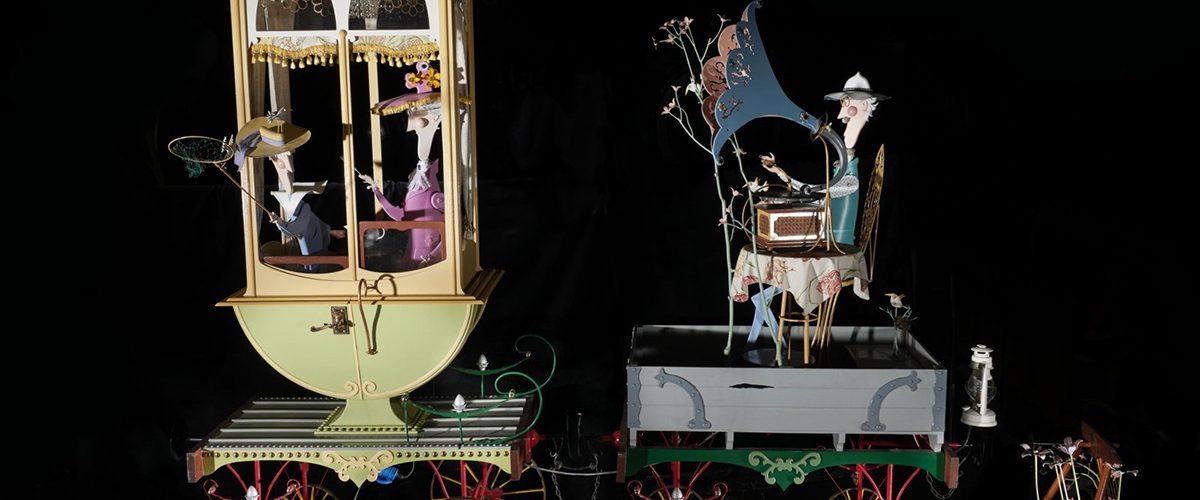Lorraine Worsley-Carter visits the Science and Industry Museum to see the charming final work from the creator of the inventions of ‘Caractacus Potts’ in the film Chitty Chitty Bang Bang
Christmas shopping might be fun but endeavouring to weave your way from shop to shop, car space or car park, can be equally frustrating for pedestrians and drivers alike.
I decided to take a break from the hassle of negotiating the Manchester city centre traffic and I headed for the Science and Industry Museum.
I had already heard of the work of artist, sculpture, inventor, the late Rowland Emett OBE, and I wanted to discover more about his works. If the name does not ‘ring any bells’ I think it soon will …

Born in London in 1906, Emett initially found fame producing cartoons for Punch magazine before creating a series of intricate mechanical sculptures based on his imaginative creations. As well as numerous artworks and cartoons, he is well known for the inventions of ‘Caractacus Potts’ in the now classic 1968 film, Chitty Chitty Bang Bang, including the flying car itself and the Humbug-Major Sweet Machine.
Constructed in 1984, his unique moving sculpture named ‘A Quiet Afternoon in the Cloud Cuckoo Valley’ was saved for the UK after being purchased for the Science Museum Group Collection with support from Art Fund, the Science Museum Foundation, the Friends of the National Railway Museum and private donors.
Almost worthy of a film script in its own right, the sculpture’s story is colourful one. ‘A Quiet Afternoon in the Cloud Cuckoo Valley’ is one of Rowland Emett’s largest pieces and was originally commissioned for a shopping centre before being exhibited at Spitalfields Market in London.

In 1999 while being stored, it was stolen for scrap metal but later recovered and refurbished.
Visitors are able to see two scenes from the fantastical work of art, telling the story of a journey aboard the imaginary ‘Far Tottering and Oyster Creek Railway,’ based on one of Emett’s cartoons.
The two scenes – Far Tottering and Oyster Creek Railway featuring the ‘Wild Goose’ locomotive, and Oyster Creek – come to life twice a day at 11.30am and 2pm. Visitors are treated to cogs whirring and characters toasting teacakes and catching butterflies and can also discover what this whimsical sculpture has in common with the museum’s thundering textiles machinery.

From now, until April 2022, this last work by one of Britain’s best loved artists and sculptors, is on display in the Science and Industry Museum’s Textiles Gallery, a first for Manchester – how we love firsts!
If that wasn’t enough, from 18 December to 4 January I hear other wondrous winter activities will be bringing the magic of machinery to life…
Everyday visitors are able to discover the surprising science behind their favourite machines at Science Stops throughout the museum with the museum’s Explainer Team’s very own inventions.
At 10.45am, 1.15pm and 2.45pm each day, under sevens can join the Museum Team for Mini Movers as they roll, clank, whirr and clack our way round the Textiles Gallery – exploring the machines around them through wonderous mechanical creations springing to life and turning your body into a machine!

Well for me its was time to clank and whirr around the shops. I hoped that perhaps a little gem of imagination star dust had settled upon me, and that the choice of my gift purchases might reflect true artistic flair. Recipients, please take note, no review is required!
Tickets for the Winter activities are available now and can be booked in advance through the museum’s website or by calling 033 0058 0058.






